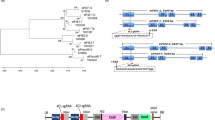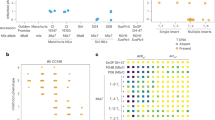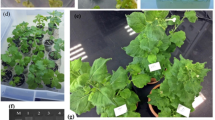Abstract
Every year potato growers worldwide complain about severe yield losses caused by Potato virus Y (PVY). Therefore, PVY along with Potato virus Y belongs to the most important potato viruses. There are three main strains of PVY: PVY^O^, PVY^N^ and PVY^C^. However, also recombinant forms exist such as PVY^N^Wilga and PVY^NTN^, both of which increase in importance due to their potential to displace the non-recombinant strains at a high percentage. They appear also in mixed infections. In recent years PCR and qPCR assays were developed to differentiate PVY isolates. In order to identify PVY isolates by PCR often large amplicons have to be generated which requires the input of expensive enzymes. On the other hand, qPCR assays until now do not allow the differentiation between PVY^N^Wilga and PVY^NTN^.For the discrimination between PVY^O^/PVY^N^Wilga and PVY^N^/PVY^NTN^ a qPCR assay was developed, which allows the differentiation and highly efficient quantification of both strains and recombinants, respectively. For this purpose dual-labeled hydrolysis probes tagged with different fluorophores were designed. The assay is suitable for many different applications, for example safety research on genetically modified (GM) potato plants. The goal of this research is to determine whether genetic modification causes changes in resistance to viruses. Two different GM cultivars were examined for signs of altered resistance to an infection with PVY in comparison to their near-isogenic lines and three reference cultivars. Reference cultivars are included to determine the baselines for resistance and thus to be able to decide if the changes could represent a biological risk. The plants to be investigated were mechanically inoculated with PVY^N^Wilga or PVY^NTN^ and analyzed by means of the developed assay after two weeks. The results of the experiment indicate that the differences in virus titer between the reference cultivars are higher than between the GM potatoes and their isogenic lines. Therefore, in our experiments the GM potato plants showed no alteration in PVY resistance to neither one of the tested strains.Since Myzus persicae is one of the most important vectors transmitting PVY, the developed assay will also be applied to the quantification of PVY particles in aphids. The displacement of PVY^O^ and PVY^N^ by PVY^N^Wilga and PVY^NTN^ may be due to a difference in efficiency of transmission by M. persicae. Therefore, the objective is to test whether more virus particles of the recombinant forms in comparison to the non-recombinant strains PVY^O^ and PVY^N^ bind in the stylets of M. persicae. A third possible application of the developed assay may be of interest in potato breeding. The exact quantification of PVY particles in plants allows the classification of resistance in potato plants. It is possible to estimate whether a resistance is extreme or not. Extreme resistance is characterized by the absence or presence of very low amounts of virus particles in plants several days after inoculation. When testing the plants for PVY infection by ELISA, often unspecific reactions occur which makes it difficult to differentiate between plants weakly infected and plants very weakly infected. An exact quantification of the PVY titer gives more certainty for the determination of the resistance type.In conclusion, the developed assay is an efficient and low-cost method that allows the differentiation and quantification of PVY^O^/PVY^N^Wilga on the one hand and PVY^N^/PVY^NTN^ on the other hand with high throughput. The method can be utilized for a wide range of applications in potato research.
Similar content being viewed by others
Article PDF
Author information
Authors and Affiliations
Corresponding author
Rights and permissions
About this article
Cite this article
Hühnlein, A., Schubert, J., Thieme, T. et al. Quantitative detection of Potato virus Y in potato plants and aphids - Discussion of diverse applications in potato research. Nat Prec (2011). https://doi.org/10.1038/npre.2011.5734.1
Received:
Accepted:
Published:
DOI: https://doi.org/10.1038/npre.2011.5734.1



